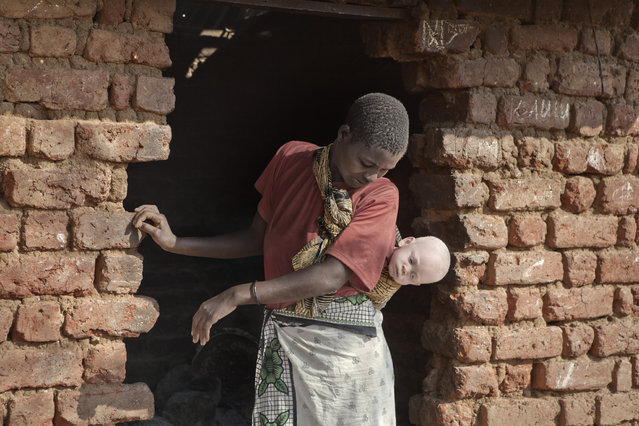
The women who flee to the centre with their albino children also act as guardians for the other albino children who have been abandoned at the centre in Kabanga Refuge Centre, Tanzania, 2012. The rescue centres protect albino people from the vicious hunters who sell their body parts to witch doctors. Photojournalist Ana Palacios, 43, visited the centre in Tanzania three times between 2012 and 2016 to find out more about the plight of albino people. Persecution of albinism is rooted in the belief that the body parts can transmit magical powers, however, they are also ostracised by those who believe that they are cursed and bring bad luck. The Tanzanian government has been forced to set up special centres to protect people with albinism from harm. (Photo by Ana Palacios/Barcroft Images)
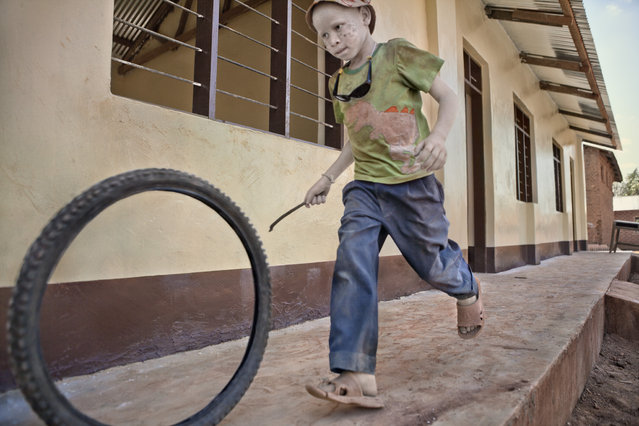
A young boy with albinism plays with a hoop and stick in Kabanga Refuge Centre, Tanzania, 2012. (Photo by Ana Palacios/Barcroft Images)
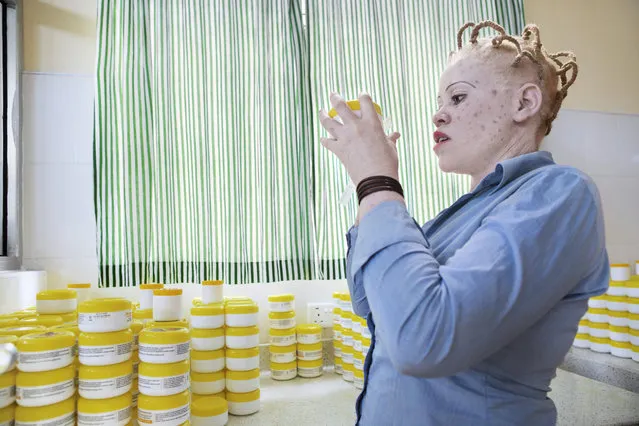
Grace Manyika checks the jars before sending the product to the distribution centres in Moshi, Tanzania, 2016. (Photo by Ana Palacios/Barcroft Images)
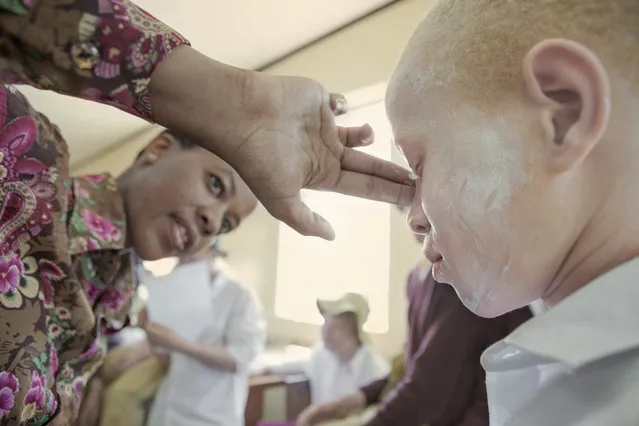
Sang'uti Olekuney demonstrates how to apply Kilisun, a Tanzanian made sunscreen specifically designed for people with albinism in Moshi, Tanzania, 2016. (Photo by Ana Palacios/Barcroft Images)
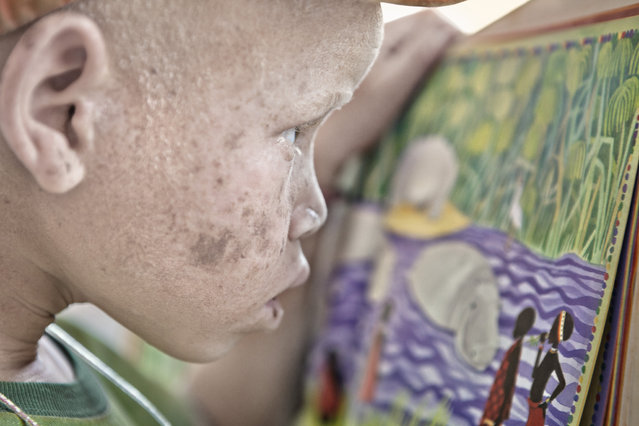
A young girl with albinism inspects her artwork in Moshi, Tanzania, 2016. (Photo by Ana Palacios/Barcroft Images)
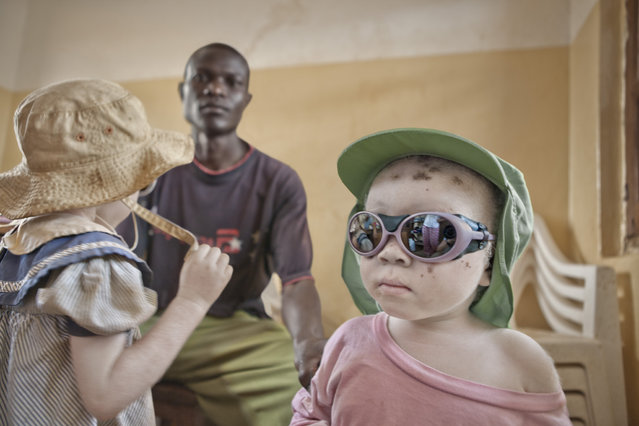
An albino person's skin has little or no melanin, which is an effective blocker of solar radiation, and this makes them extremely vulnerable to the harsh effects of the sun in Kabanga Refuge Centre, Tanzania, 2012. (Photo by Ana Palacios/Barcroft Images)
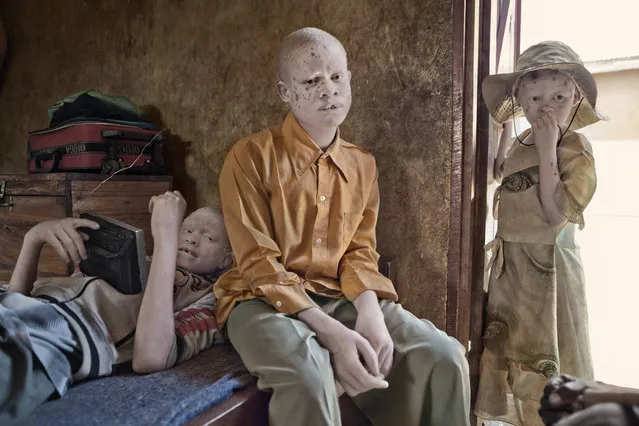
The oldest children at the Kabanga centre, Bethod and Biko, listen to Celine Dion on their old radio cassette player in Kabanga Refuge Centre, Tanzania, 2012. (Photo by Ana Palacios/Barcroft Images)
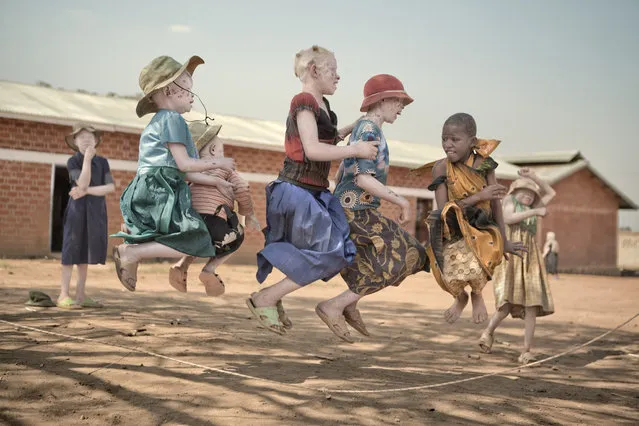
Children at the centre finish school at five in the afternoon and return to the centre where they feel safer playing outside in Kabanga Refuge Centre, Tanzania, 2012. (Photo by Ana Palacios/Barcroft Images)
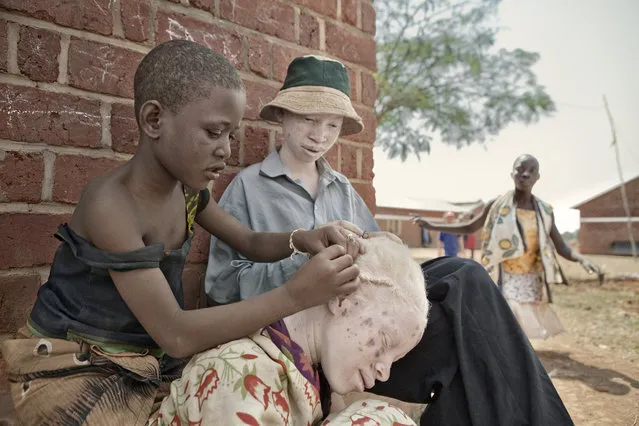
Hadija braids Zawia's hair in a shady spot where Zawia faces less risk of sun damage in Kabanga Refuge Centre, Tanzania, 2012. (Photo by Ana Palacios/Barcroft Images)
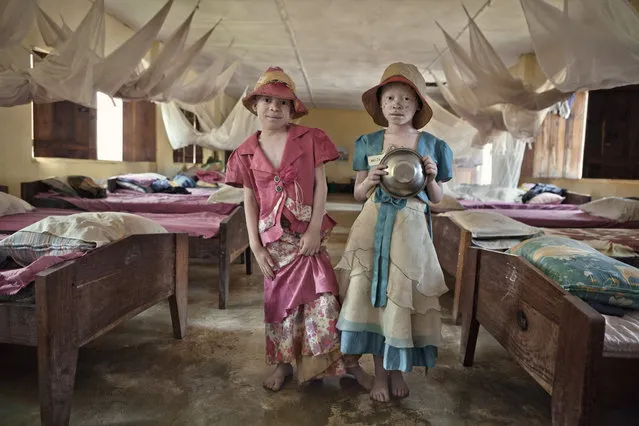
At the centre a hundred albinos live alongside people with a range of physical and mental impairments in Kabanga Refuge Centre, Tanzania, 2012. (Photo by Ana Palacios/Barcroft Images)
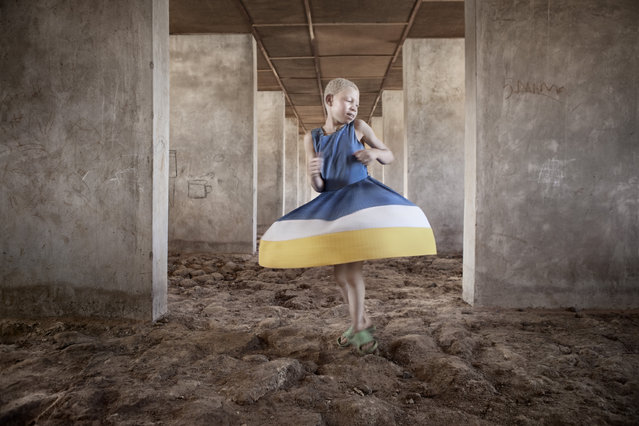
Eleven-year-old Kelen loves to dance in the half-built rooms of the centre in Kabanga Refuge Centre, Tanzania, 2012. (Photo by Ana Palacios/Barcroft Images)
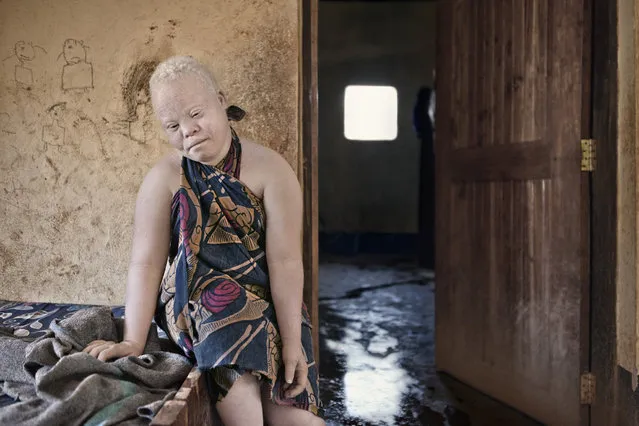
Baswira Ntotye shelters inside the huts of Kabanga to get away from the sun in Kabanga Refuge Centre, Tanzania, 2012. (Photo by Ana Palacios/Barcroft Images)
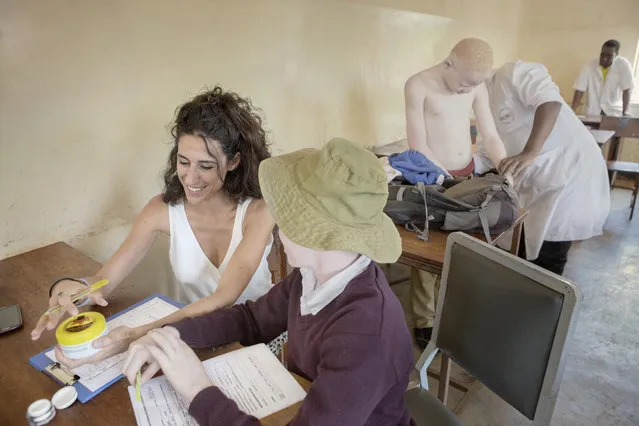
Mafalda Soto, the founder of Kilisun, during a special consultation with school student Salim Rashid with different prototypes of sunscreen formulas in Moshi, Tanzania, 2016. (Photo by Ana Palacios/Barcroft Images)
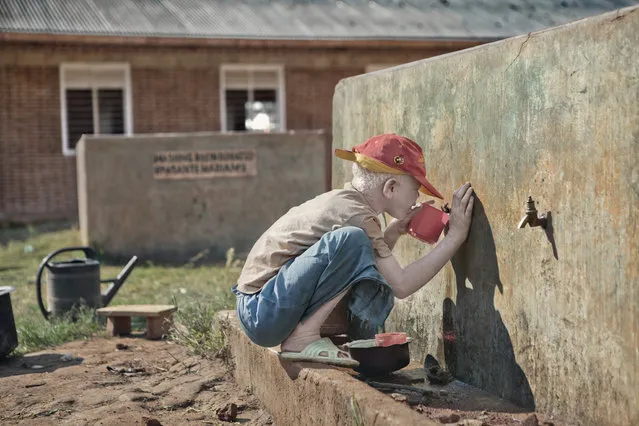
When water runs low the black women take turns visiting the hospital wells so the albino women do not risk being taunted or kidnapped in Kabanga Refuge Centre, Tanzania, 2012. (Photo by Ana Palacios/Barcroft Images)
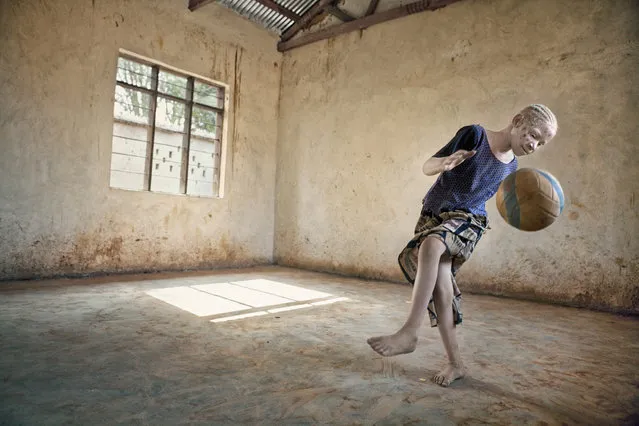
Zawia, who speaks Swahili, English and sign langauge, aspires to be a teacher in Kabanga Refuge Centre, Tanzania, 2012. (Photo by Ana Palacios/Barcroft Images)
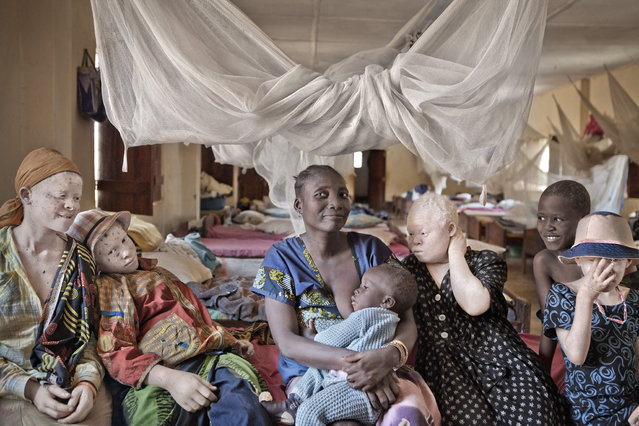
The Tanzanian government set up special protective centres for people with albinism after many had to flee their homes from traffickers in Kabanga Refuge Centre, Tanzania, 2012. (Photo by Ana Palacios/Barcroft Images)
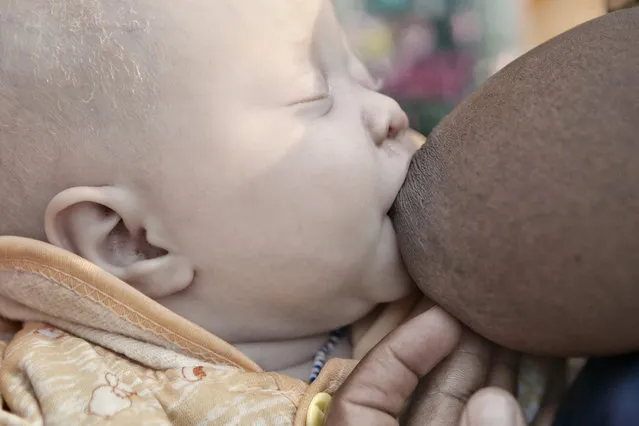
Many women are forced to flee to complexes like Kabanga when they give birth to an albino child in Kabanga Refuge Centre, Tanzania, 2012. (Photo by Ana Palacios/Barcroft Images)
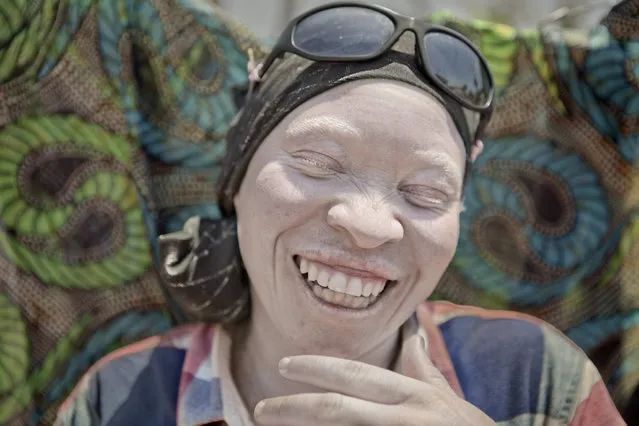
Epafroida lives at the refuge centre and dreams of opening her own textile business in a nearby market in Kabanga Refuge Centre, Tanzania, 2012. (Photo by Ana Palacios/Barcroft Images)
01 Oct 2016 11:02:00,
post received
0 comments
